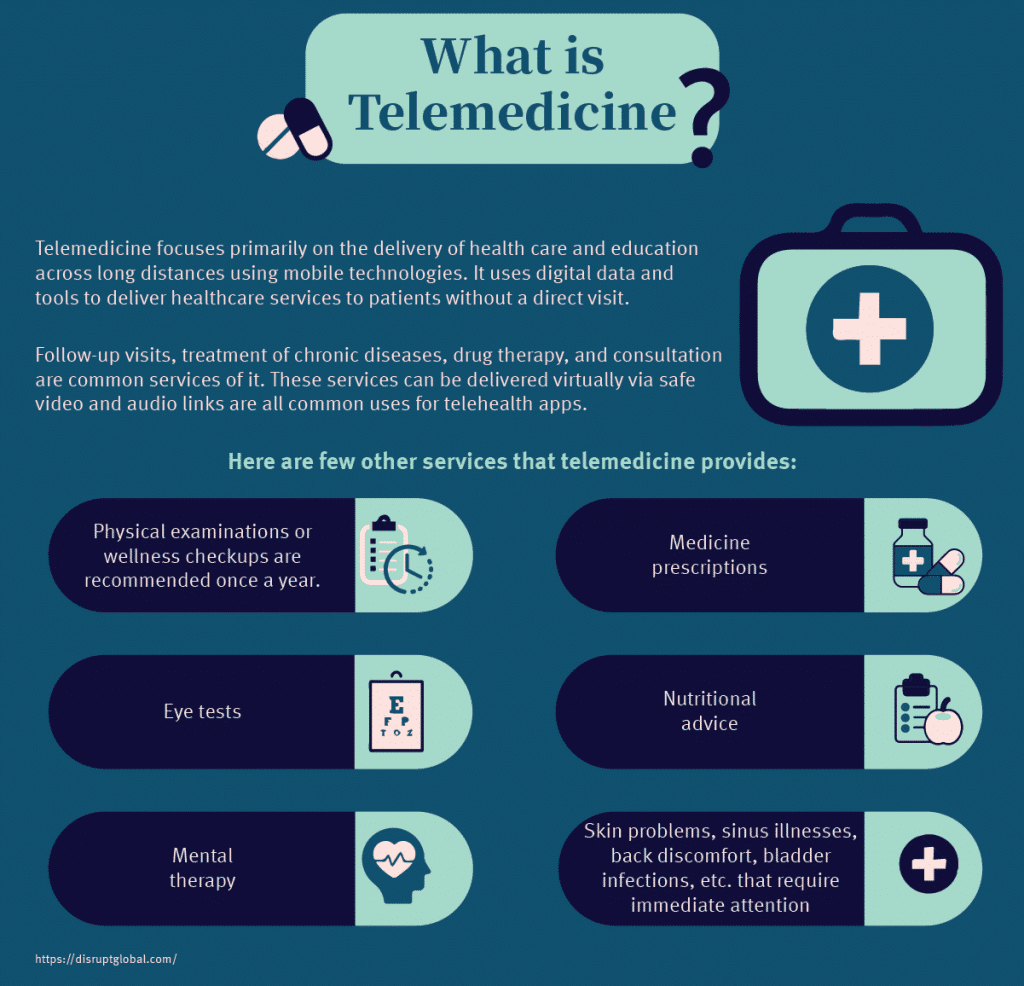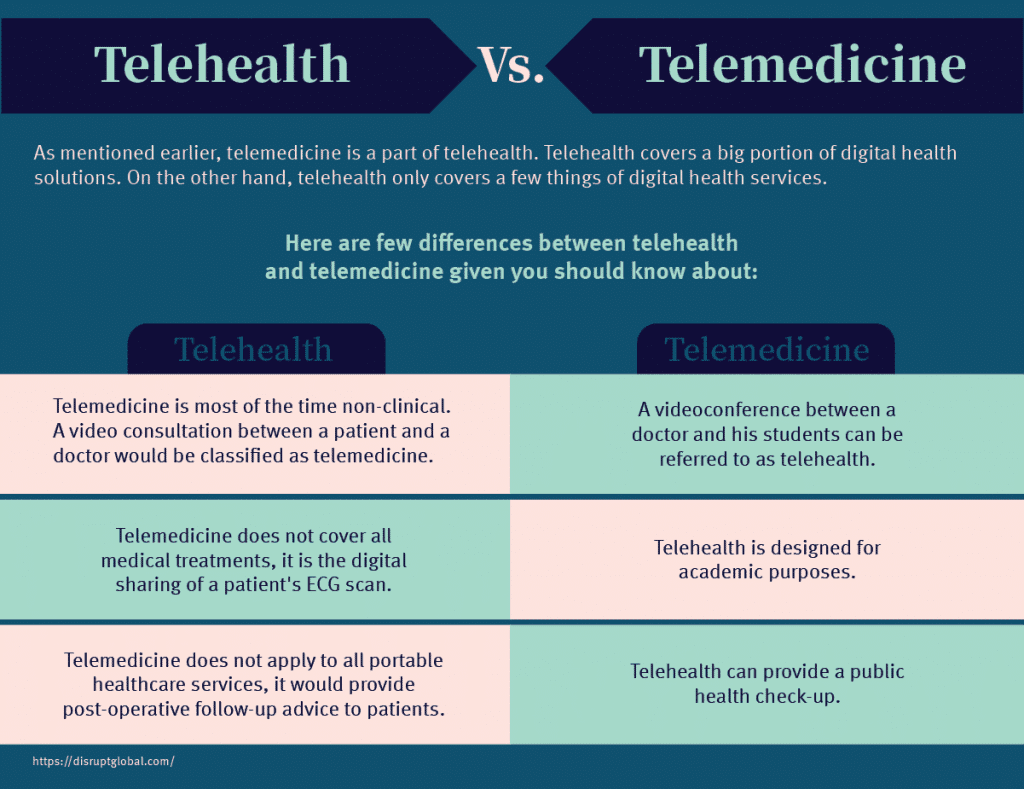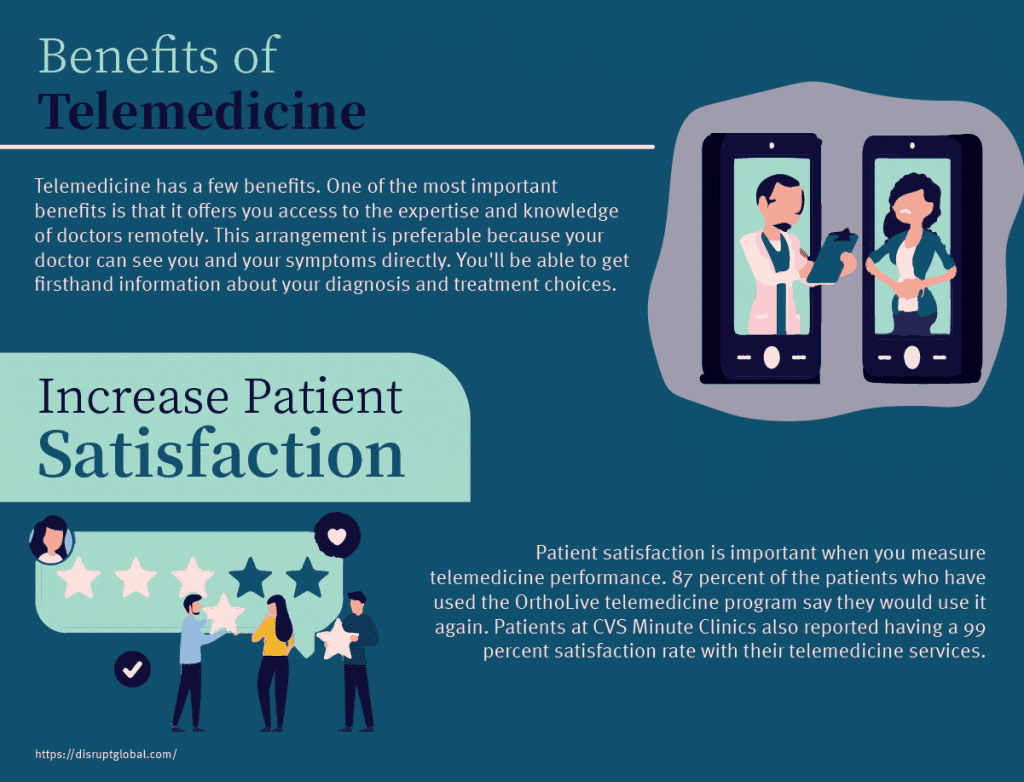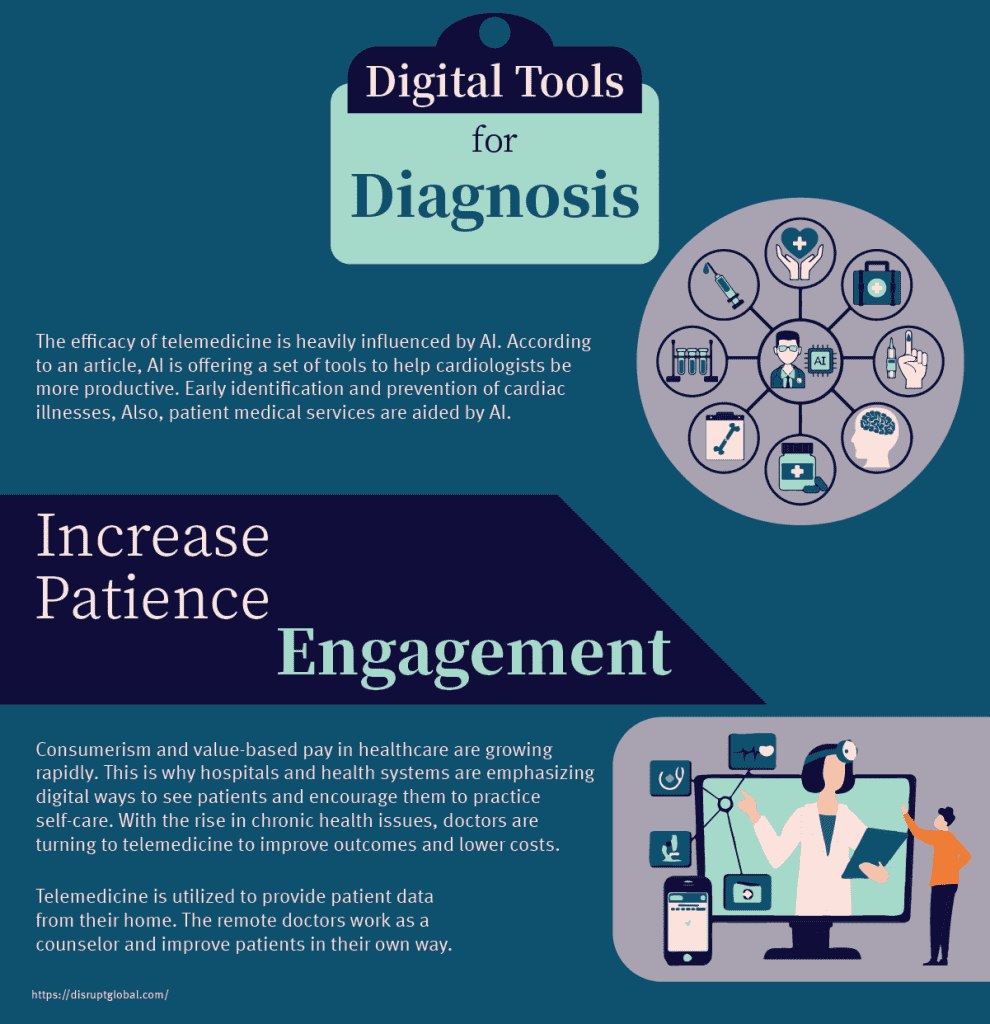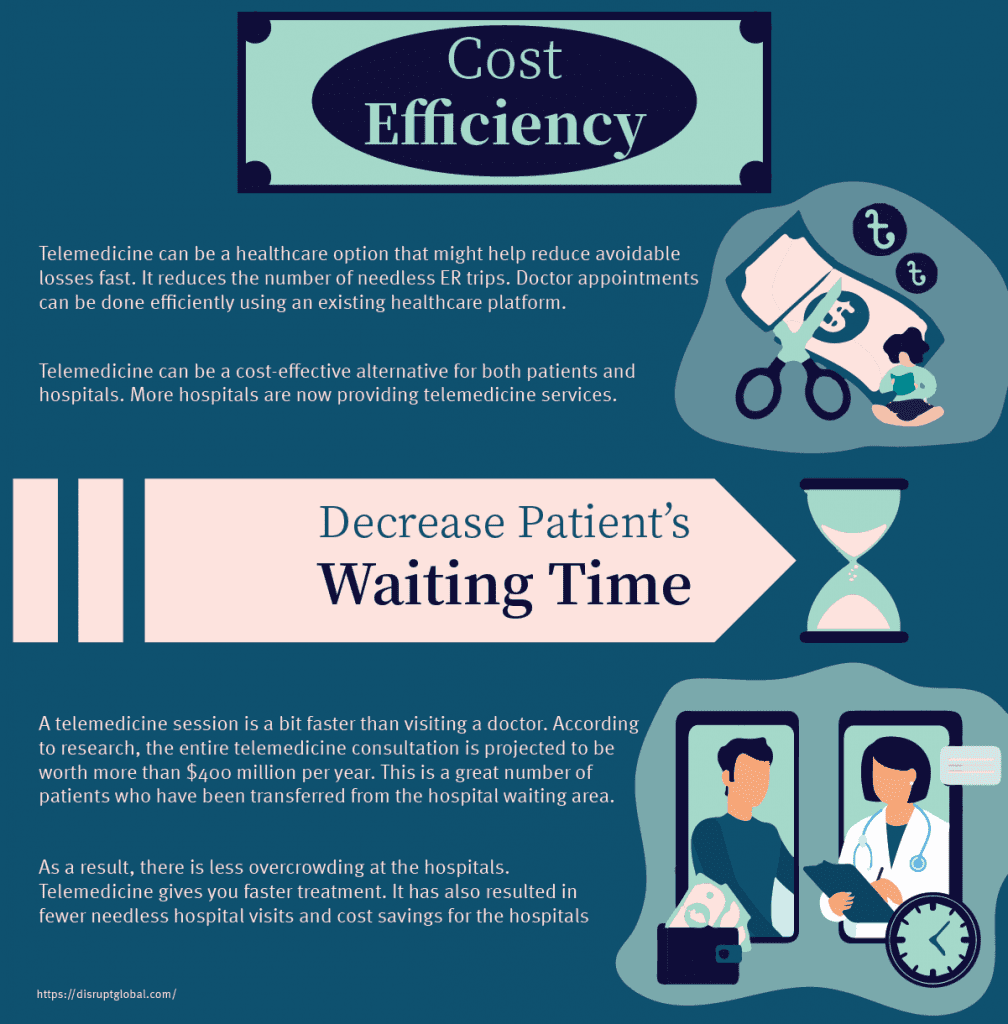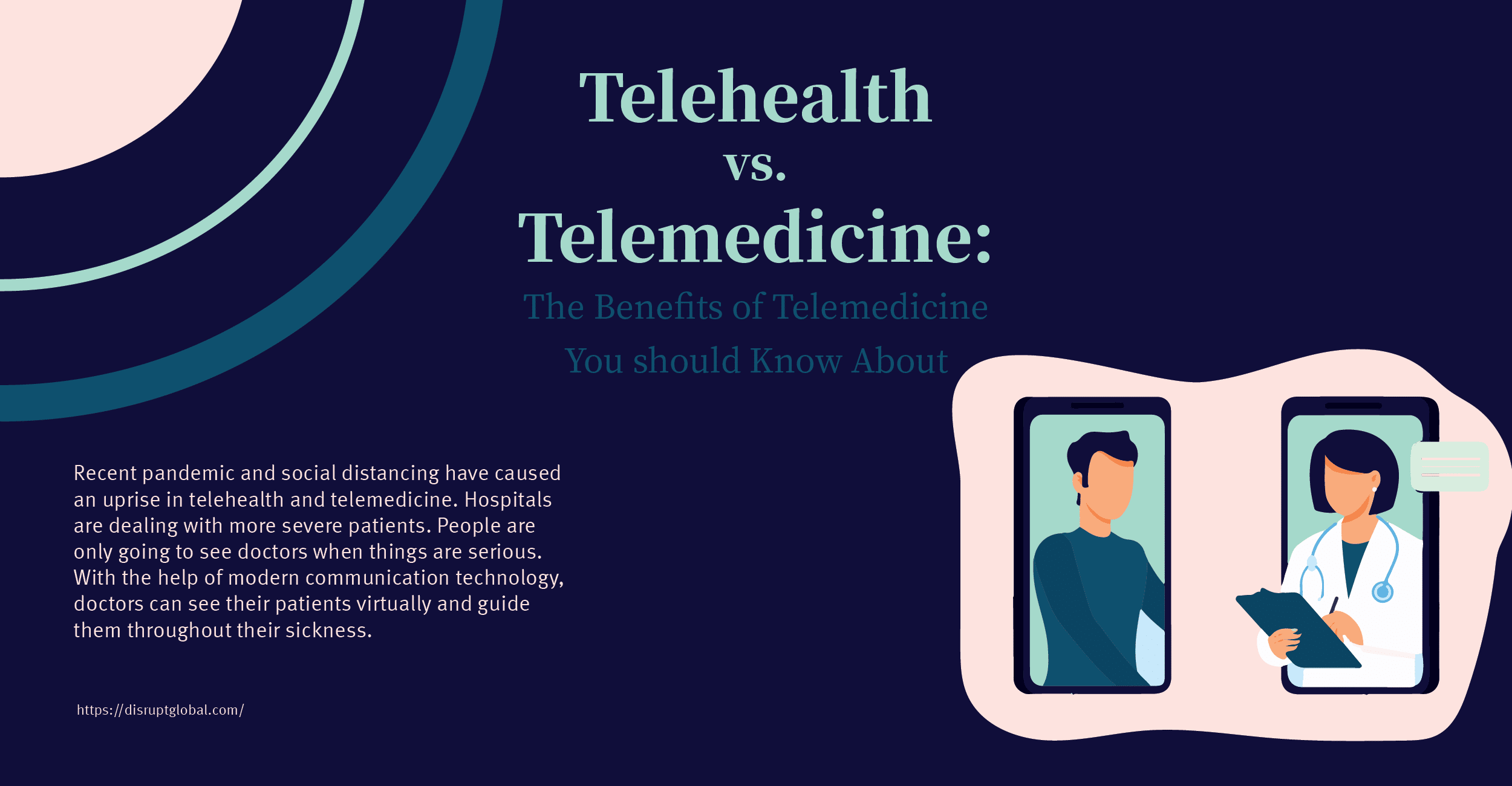
Telehealth vs Telemedicine: The Benefits of Telemedicine You should Know About
Posted by. Disrupt Tech. January 27, 2022
Digital technologies are blessing us in many ways. During 2020-21, almost every kind of industry is going digital. The same goes for the medicine and health industry. Recent pandemic and social distancing have caused an uprise in telehealth and telemedicine.
The Healthcare industry has always been a physical and brick-and-mortar type industry. People had to go to hospitals, clinics, and doctors for medical services. In dire times, doctors pay a visit to you to check up on you.
But everything changed after the COVID-19 hit. Now people need to stay home. Hospitals are dealing with more severe patients. People are only going to see doctors when things are serious.
So what to do when people have mild sickness or can’t have physical contact with doctors?
This is where telehealth and telemedicine come in. With the help of modern communication technology, doctors can see their patients virtually and guide them throughout their sickness.
This article will explore what is the difference between telehealth and telemedicine. Also, what are the benefits of telemedicine you should know about will be discussed here too.
What is Telehealth?
Telehealth refers to a wide variety of technology and services used to offer clinical outcomes. It also enhances the overall health care system. Telehealth is distinct from telemedicine in that it uses a larger range of virtual medical services.
Along with medical services, telehealth can refer to remote non-medical services. For example, development programs and admin conferences. The World Health Organization mentioned that Telehealth needs to have at least 3 distinct services. These are surveillance, health promotion, and public health activities.
There are other services telehealth offers too. Such as:
Mobile Health: Mobile health or mHealth which sends health information over mobile devices.
Remote Patient Monitoring (RPM): With digital technologies, RPM gathers and sends patient data to doctors from the patient’s location. This happens typically outside of usual healthcare facilities.
Other Services: Medical reports can be sent easily since there is no real-time contact between doctors and patients.
What is Telemedicine?
Telemedicine is a subgroup of telehealth. It focuses primarily on the delivery of health care and education across long distances using mobile technologies. Telemedicine uses digital data and tools to deliver healthcare services to patients without a direct visit.
Follow-up visits, treatment of chronic diseases, drug therapy, and consultation are common services of it. These services can be delivered virtually via safe video and audio links are all common uses for telehealth apps.
Here are few other services that telemedicine provides:
Physical examinations or wellness checkups are recommended once a year.
Medicine prescriptions
Eye tests
Nutritional advice
Mental therapy
Skin problems, sinus illnesses, back discomfort, and bladder infections, etc. that require immediate attention.
Telehealth vs. Telemedicine
As mentioned earlier, telemedicine is a part of telehealth. Telehealth covers a big portion of digital health solutions. On the other hand, telehealth only covers a few things of digital health services.
Here are few differences between telehealth and telemedicine given you should know about:
Telemedicine is not all about videoconferencing. Most of the time it is non-clinical. A videoconference between a doctor and his students can be referred to as telehealth. But a video consultation between a patient and a doctor would be classified as telemedicine. It involves a medical connection that needs treatment and medication support.
Telemedicine does not cover all medical treatments. To put it simply, telehealth is designed for academic purposes. On the contrary, telemedicine is the digital sharing of a patient’s ECG scan.
Telemedicine does not apply to all portable healthcare services. For example, telehealth can provide a public health check-up. But telemedicine would provide post-operative follow-up advice to patients. Both things are not the same.
Benefits of Telemedicine
Telemedicine has a few benefits. One of the most important benefits is that it offers you access to the expertise and knowledge of doctors remotely.
You can tell the doctor about your health history and discuss issues during a telemedicine appointment. In turn, the doctor will be able to directly ask you questions too.
This arrangement is preferable because your doctor can see you and your symptoms directly.
Your cough can be heard. Your puffy eyes can be seen by him.
You’ll be able to get firsthand information about your diagnosis and treatment choices. Now, Telemedicine is regarded as a standard medical service.
Here are few benefits of telemedicine you should know about:
Increase Patient Satisfaction
Patient satisfaction is important when you measure telemedicine performance. 87 percent of the patients who have used the OrthoLive telemedicine program say they would use it again.
Patients at CVS Minute Clinics also reported having a 99 percent satisfaction rate with their telemedicine services. These findings have been seen at other healthcare institutions such as the Cleveland Clinic, the Veterans Administration, and children’s hospitals, etc.
Digital Tools for Diagnosis
The efficacy of telemedicine is heavily influenced by AI. For example, Ultronics specializes in cardiology. It is an AI business located in the UK that uses technology to enhance heart disease diagnosis.
According to an article, AI is offering a set of tools to help cardiologists be more productive. Early identification and prevention of cardiac illnesses, Also, patient medical services are aided by AI. This is only one of the areas where AI is used in telemedicine. There are other uses too.
Increase Patience Engagement
Consumerism and value-based pay in healthcare are growing rapidly. This is why hospitals and health systems are emphasizing digital ways to see patients and encourage them to practice self-care.
Doctors need to tell people how to care for themselves between visits. This way doctors can treat them proactively. With the rise in chronic health issues, doctors are turning to telemedicine to improve outcomes and lower costs.
Today, telemedicine is utilized to provide patient data from their home. The remote doctors work as a counselor and improve patients in their own way.
Cost Efficiency
According to studies, the United States spends more than USD$2.9 trillion on health care. Researchers estimated USD$200 billion of this is wasteful and unneeded. Isn’t that crazy?
Telemedicine can be a healthcare option that might help reduce avoidable losses fast. It reduces the number of needless ER trips. Doctors don’t need regular in-office appointments. It can be done efficiently using an existing healthcare platform.
Telemedicine can be a cost-effective alternative for both patients and hospitals. More hospitals are now providing telemedicine services. Last year, Walgreens established its own telemedicine service.
Decrease Patient’s Waiting Time
A telemedicine session is a bit faster than visiting a doctor. According to research, the entire telemedicine consultation is projected to be worth more than $400 million per year. This is a great number of patients who have been transferred from the hospital waiting area.
As a result, there is less overcrowding at the hospitals. Telemedicine gives you faster treatment. It has also resulted in fewer needless hospital visits and cost savings for the hospitals.
Conclusion
The COVID-19 has pushed healthcare and transformed it into telehealth and telemedicine. With the help of proper technologies, you don’t need to visit the doctor for your chronic diseases.
You can stay at your home, video conference with your doctor and you will be treated as usual. More sophisticated benefits could be seen later on from the telehealth and telemedicine industries.

